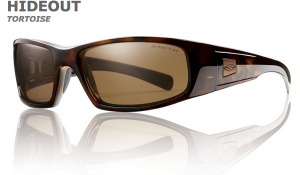Sunglasses:
By Martina R. Katzman, MD (Opthamology)
[dropcap]F[/dropcap]or me, polarized sunglasses are not an option when I’m fishing. They’re a necessity. They protect your eyes from harmful ultraviolet (UV) rays, reduce eye strain in bright conditions, eliminate glare, let you see into the water, protect you from flying debris, an errant cast and other hazards.
Lens Material
The material used in your sunglass lenses will affect their clarity, weight, durability and cost. Glass—PROS:
Superior optical clarity; superior scratch-resistance. CONS: Heavier than others; expensive; glass will “spider” when impacted (but not chip or shatter).
Polyurethane—PROS: Superior impact-resistance; excellent optical clarity; flexible and lightweight. CONS: Expensive.
Polycarbonate—PROS: Excellent impact-resistance; very good optical clarity; affordable; lightweight and low bulk. CONS: Less scratch-resistance; slightly less optical-clarity than glass.
Acrylic—PROS: Inexpensive alternative to polycarbonate, best suited for casual or occasional-use sunglasses. CONS: Less durable and optically not as clear as polycarbonate or glass; some image distortion.
About Lens Color (Tint)
All sunglass lenses are tinted to cut down on overall brightness and enhance definition. But your choice of tint colors affect your vision by influencing how much visible light reaches your eyes, how well you see other colors, and how well you see contrasts.
Brown/gray/green—Brown, gray and green lenses are color-neutral, which means they cut down on overall brightness without distorting colors. These darker shades are intended primarily to cut through the glare and reduce eyestrain in moderate-to-bright conditions.
Yellow/gold/amber—Yellow, gold and amber lenses provide less overall brightness protection, but excel in moderate-to-low level light conditions. They provide excellent depth perception, which makes them perfect for snow sports. They also enhance contrasts in tricky, flat-light conditions. Amber is an excellent tint for flats fishing.
Rose/vermilion—Rose- and vermilion-colored glasses really do make the world seem brighter. They provide excellent low-light visibility and enhance contrast (perfect for cloudy conditions). They also enhance the visibility of objects against blue and green backgrounds, which makes them ideal for driving or exploring in forested areas.
Mirrored or flash coating
This refers to a reflective film applied to the outside surfaces of some sunglass lenses. They reduce glare by reflecting much of the light that hits the lens surface. Mirrored coatings make objects appear darker than they are, so lighter tints are often used to compensate for this.
Understanding Polarized
Polarization is a must for fishermen. Polarized lenses are especially effective with glare. When light reflects off of flat surfaces, such as a lake or flat, the light waves align in horizontal patterns, creating intense glare. The filters in polarized lenses block these horizontal light waves, substantially reducing blinding glare and its resulting eyestrain.
Take note
In some instances, polarized filters react with the tints in windshields, creating blindspots and diminishing the visibility of LCD readouts. If this occurs, you should consider mirrored lenses as a glare-reducing alternative for driving.
Sandwich and new tech
Inexpensive casual styles have the polarizing filter applied as an external film coating. More durable and expensive glasses sandwich the polarizing filter between layers of the lens. The newest high-end technology combines the polarizing filter with the lens material while the latter is in a liquid form. This allows the filter and lens to bond without the use of adhesives and sustains an exceptionally high optical quality.
The method used to polarize lenses affects both the optical-quality and cost of the sunglasses.
Cleaning
Use a soft, lint-free cloth (such as a microfiber) to clean your lenses. Never use a wood-based materials, such as facial tissue, which are too abrasive for safe cleaning. A spray-on lens cleaner or just plain water should also be used, since dry lenses are more susceptible to scratching when rubbed.
Lens Shape
There are no right or wrong lens shapes, but wrap-around lenses block more of the light hitting your eyes from the side. They improve aerodynamics, cutting down on wind that can dry out your eyes, and provide extra protection against errant casts and debris in general.
Last cast
Pick glasses that fit, make sure the frame aids in blocking sun. Always get a wrap around and with windows if possible. Wire frame polarized glasses are almost worthless for fishing.
Are pricey glasses worth it?
Sorry, but the answer is yes. Never scrimp on eye protection. It would be profligate to spend $700 on a guide-day and not see fish because the $20 sunglasses you bought at a drug store are worthless.
[information]
Here’s a couple of polarized shade makers with great track records and positive associations with fishing.
http://www.smithoptics.com/
http://www.costadelmar.com/
[/information]




